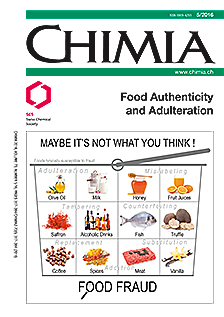Food Adulteration in Switzerland: From 'Ravioli' over 'Springbok' to 'Disco Sushi'
DOI:
https://doi.org/10.2533/chimia.2016.334Keywords:
Checking of accounts, Food adulteration, Meat adulteration, Ravioli scandal, Sushi adulterationAbstract
The driving force behind food adulteration is monetary profit and this has remained unchanged for at least the last hundred years. Food adulterations were and still are difficult to uncover because they occur mostly in an unpredictable and unexpected way. Very often food falsifiers take advantage of modern technology in such a way that food adulterations are difficult or sometimes even impossible to detect. Targets for food adulteration were and still are highly priced food items such as spirits, meat, seafood and olive oil. Although difficult to detect, food adulterations were in the past strong driving forces for the development of adequate detection methods in the official food control laboratories and for the enforcement of the food law. A very prominent example in this context is the 'Ravioli scandal' in Switzerland in the late 1970s which showed that cheap second-class meat could be processed into products without being discovered for long time. As a consequence the official food control laboratories in Switzerland were reinforced with more laboratory equipment and technical staff. With the introduction of new detection principles such as DNA-based analytical methods new kinds of food adulteration could and can be uncovered. Analytical methods have their limits and in some cases of food fraud there are no analytical means to detect them. In such cases the examination of trade by checking of accounts is the method of choice.Downloads
Published
2016-05-25
Issue
Section
Scientific Articles
License
Copyright (c) 2016 Swiss Chemical Society

This work is licensed under a Creative Commons Attribution-NonCommercial 4.0 International License.
How to Cite
[1]
P. Hubner, Chimia 2016, 70, 334, DOI: 10.2533/chimia.2016.334.







